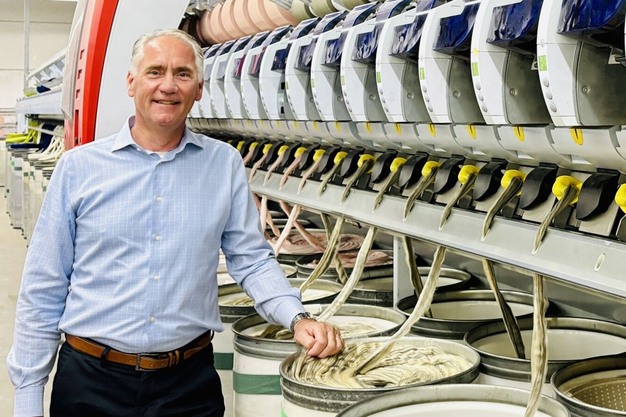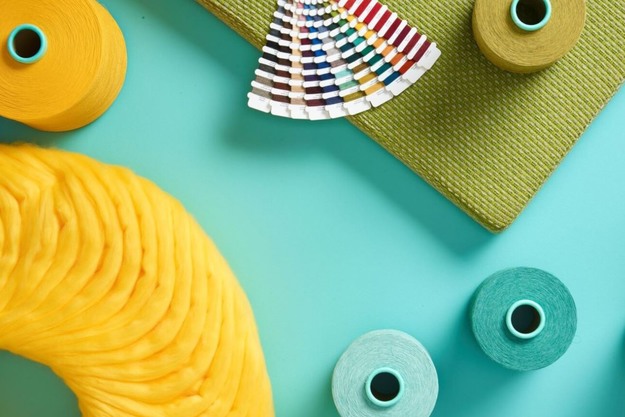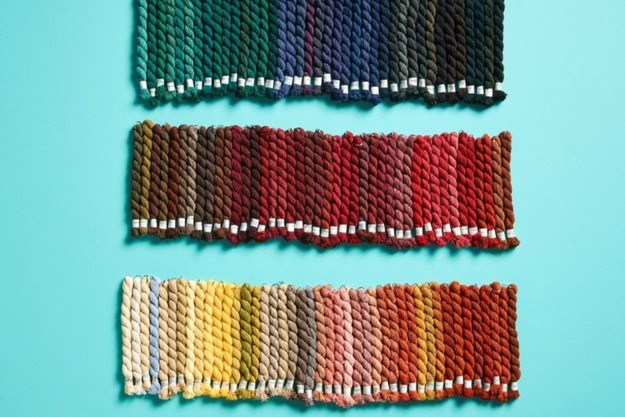What started as a niche project has grown into an innovative and versatile outdoor collection. In an interview, Commercial Director Steven Janssens discusses the vision behind this collection, the choices in materials, and the future plans of European Spinning Group (ESG). He explains how ESG distinguishes itself in a competitive market.
 © ESGSteven Janssens, Commercial Director of European Spinning Group (ESG).
© ESGSteven Janssens, Commercial Director of European Spinning Group (ESG).
What makes this collection unique?
Steven: 'Our strength lies in the combination of high-quality material and specialised production processes. As a result, we can offer a wide range of applications. This interaction between material and technique forms the core of our approach, and we consciously communicate it as an asset of our spinning mill.'
Why was solution dyed acrylic chosen?
Steven: 'The outdoor sector is indispensable worldwide. In the past five to six years, that market has evolved enormously. Of course, there are different products based on various raw materials, but for us, there is only one top material: solution dyed acrylic.
In this technique, the colour is added to the fibre during the production process. This saves a great deal of water and chemicals, resulting in a fibre that is coloured to the core. The colourfastness is therefore much higher than with traditionally dyed fabrics. And that is essential, not only for outdoor use, but also for, for example, curtains and sofas indoors. Colour that fades and fabric that deteriorates, we consciously avoid that.'
How does this material contribute to sustainability?
Steven: 'Because the fibre is already coloured during the production process, no additional dye baths or chemical treatments are needed. This fits perfectly within ESG's sustainable vision. We choose fibres with intrinsic advantages, thus avoiding environmentally harmful steps.'
And what does that mean for the customer?
Steven: 'The fabrics remain beautiful for years, are colourfast and easy to maintain, you can even clean them with household bleach. They are also resistant to chlorine and salt, making them ideal for use by swimming pools, on the beach, or by the sea.' © ESG
© ESG
How does ESG distinguish itself in the market?
Steven: 'Where the classic market primarily focuses on sun protection, we go wider: from upholstery fabrics to carpets, curtains, and maritime applications. Our geographical spread and long-term collaborations strengthen our position. Thanks to our extensive colour collection, we connect customers from diverse segments, leading to a strong overall concept for the contract market.'
What does colour mean for ESG?
Steven: 'Our standard collection includes more than 100 colours, and on request, we create additional shades. We work with single yarns, but also with twisted, cabled or fancy yarns such as bouclé, often in collaboration with external partners. Our colour combinations are truly unique. No one spins colour the way we do.'
Is there a lot of customer loyalty?
Steven: 'Certainly. Customers who joined in 2017 continue to buy from us to this day. That is a great compliment and proves that our products grow with the market. We keep investing in color development and closely follow trends.'
Which trends or opportunities do you see at the moment?
Steven: 'Our recycled collection with GRS label offers a lot of potential. In addition, we are currently testing combinations of solution dyed acrylic with hemp. Hemp fibres, traditionally used in ship ropes, perform well in wet and sunny conditions. This natural powerhouse has much more to offer, especially in combination with our colour technique.'
How did the collaboration with Purfi come about?
Steven: 'We have been working closely with Purfi from Waregem for years. They provide us with recycled cotton of sufficient fibre length to be spun again. This allows us to make yarns with a high recycled content that achieve excellent test results. This collection is young, but has a lot of growth potential.' © ESG
© ESG
How do you reconcile sustainability with a material like acrylic?
Steven: 'Acrylic is oil-based and chemical, that's true. But the sustainability lies in the lifespan and production process: because the colour is already in the fibre, we avoid polluting steps. Additionally, we are working on recycling: reprocessing acrylic, spinning it again, and new applications with recycled content. ESG wants to actively contribute to this, in line with our ESG principles.'
'We are flooded by fast markets, not just in fashion. It is important not to rush along with that. We want to handle materials smarter and more responsibly as a manufacturer.'
What are you most proud of?
Steven: 'That as a small Belgian spinner, we supply yarns worldwide for top applications – even to Nepal, where our yarns are used in hand-knotted top-quality carpets. The volumes might be small, but they are high-end applications in the most exclusive environments. On the world map, we are a dot, but our impact is globally felt.'
And how do you see the future of outdoor textiles?
Steven: 'Modern architecture increasingly includes glass and open spaces. Therefore, interior fabrics must be better resistant to sunlight. We already notice that our yarns are increasingly used indoors. Through further specialisation, we are expanding our application area and strengthening our global market position.'
More information:
European Spinning Group (ESG)
IJzeren Bareel 42
8587 Spiere-Helkijn
+32 (0)56 461 461
[email protected]
www.esg-group.eu










